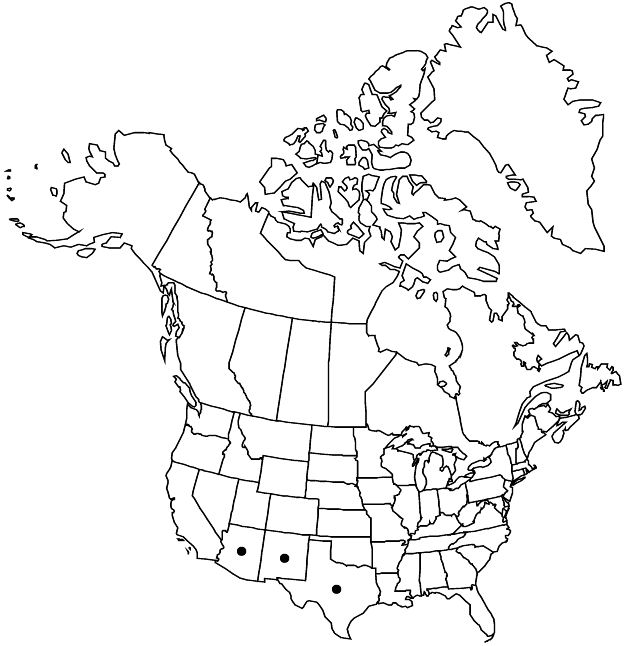Acalypha neomexicana
Linnaea 34: 19. 1865.
Herbs, annual, 1–3.5 dm, monoecious. Stems erect, pubescent. Leaves: petiole 1–4 cm; blade ovate-lanceolate, 2–5 × 0.7–2.7 cm, base rounded (sometimes asymmetric), margins crenate to serrate, apex acute. Inflorescences unisexual, axillary (staminate) and terminal (pistillate; sometimes on short lateral branches, appearing axillary); staminate peduncle 0.1–0.3 cm, fertile portion 0.1–0.6 cm; pistillate peduncle 0.1–0.2 cm, fertile portion 2–5(–7) × 1.5–2.5 cm; allomorphic pistillate flowers common, near apices of pistillate inflorescences. Pistillate bracts (normal and allomorphic flowers) crowded (inflorescence axis not or sparingly visible between bracts), 12–15 × 7–10 mm, abaxial surface pubescent and stipitate-glandular; lobes (5–)9–13(–17), deltate to triangular, 1/8–1/4 bract length, except terminal lobe to 1/3 bract length. Pedicels of allomorphic flowers rudimentary. Pistillate flowers: pistil 3-carpellate (normal flowers), 2-carpellate (allomorphic flowers); styles multifid or laciniate. Capsules smooth, pubescent; allomorphic fruits obovoid, longitudinally 2-ridged near apex, 1.4–1.6 × 1–1.2 mm, muricate, pubescent. Seeds 1.2–1.5 mm, coarsely pitted.
Phenology: Flowering and fruiting late summer–fall.
Habitat: Moist or shaded areas, oak or pine woodlands, desert grasslands.
Elevation: 600–2500 m.
Distribution

Ariz., N.Mex., Tex., n, c Mexico.
Discussion
Acalypha neomexicana is known in Texas only from the trans-Pecos region.
Selected References
None.